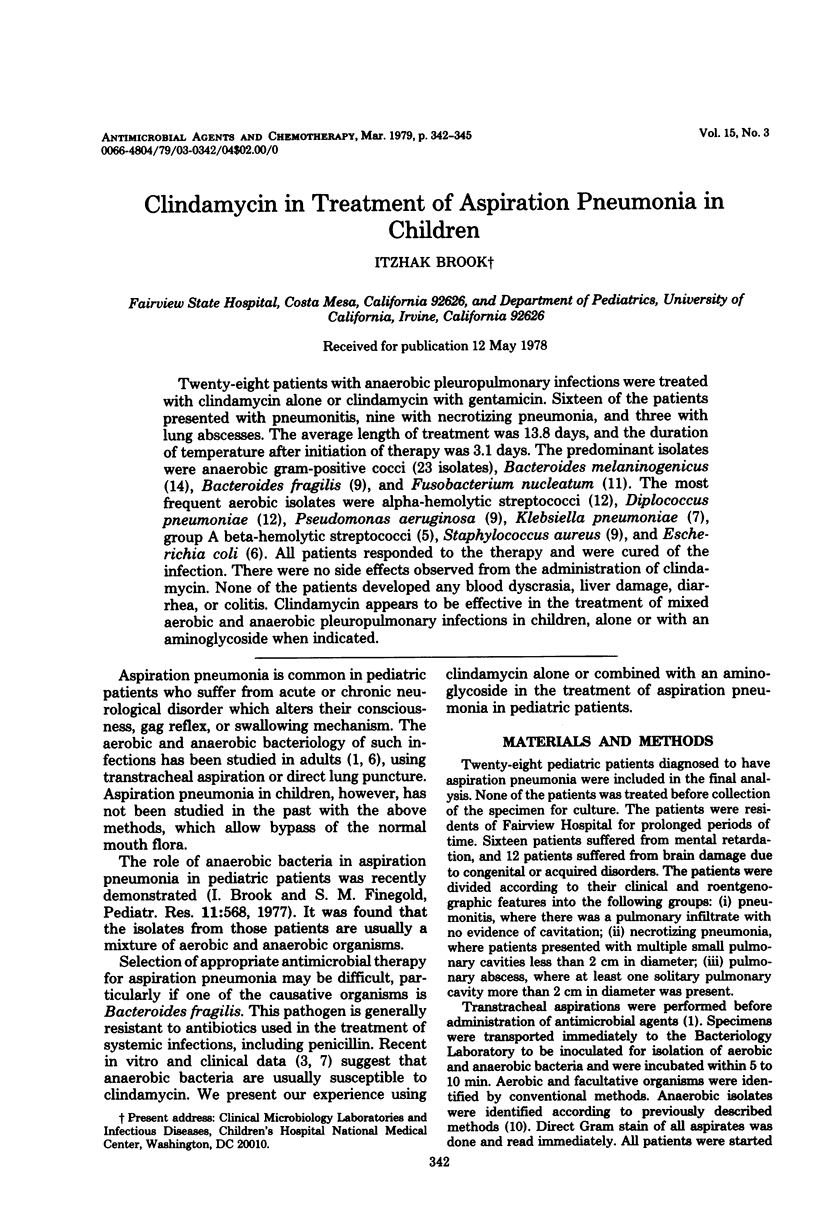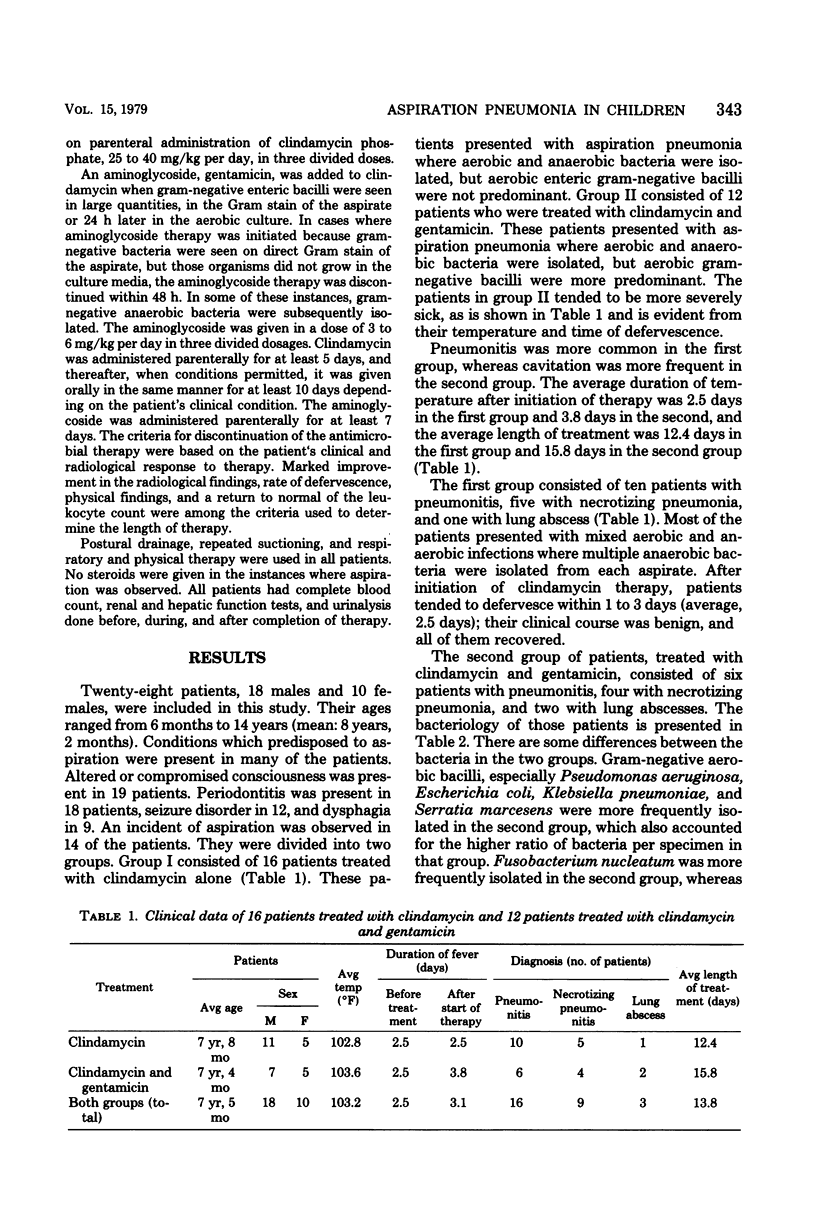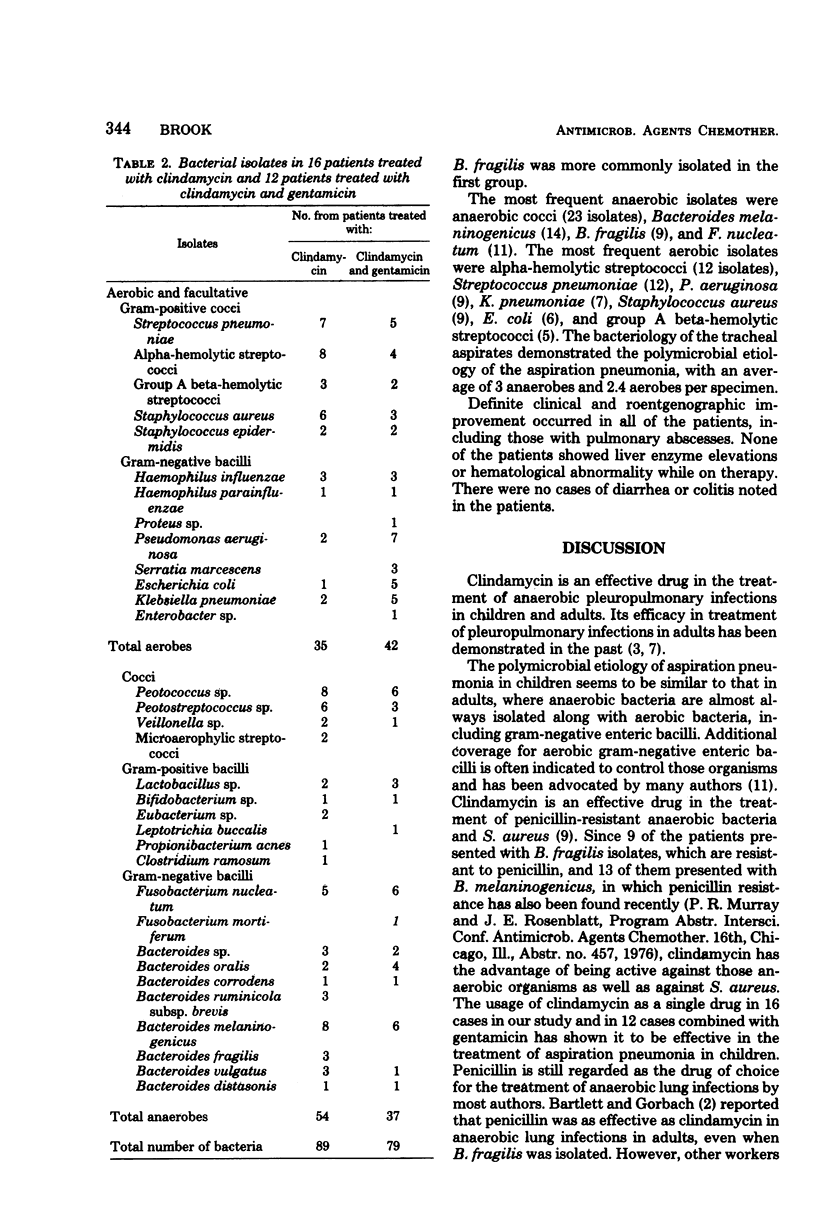Abstract
Twenty-eight patients with anaerobic pleuropulmonary infections were treated with clindamycin alone or clindamycin with gentamicin. Sixteen of the patients presented with pneumonitis, nine with necrotizing pneumonia, and three with lung abscesses. The average length of treatment was 13.8 days, and the duration of temperature after initiation of therapy was 3.1 days. The predominant isolates were anaerobic gram-positive cocci (23 isolates), Bacteroides melaninogenicus (14), Bacteroides fragilis (9), and Fusobacterium nucleatum (11). The most frequent aerobic isolates were alpha-hemolytic streptococci (12), Diplococcus pneumoniae (12), Pseudomonas aeruginosa (9), Klebsiella pneumoniae (7), group A beta-hemolytic streptococci (5), Staphylococcus aureus (9), and Escherichia coli (6). All patients responded to the therapy and were cured of the infection. There were no side effects observed from the administration of clindamycin. None of the patients developed any blood dyscrasia, liver damage, diarrhea, or colitis. Clindamycin appears to be effective in the treatment of mixed aerobic and anaerobic pleuropulmonary infections in children, alone or with an aminoglycoside when indicated.
Full text
PDF



Selected References
These references are in PubMed. This may not be the complete list of references from this article.
- Bartlett J. G., Finegold S. M. Anaerobic infections of the lung and pleural space. Am Rev Respir Dis. 1974 Jul;110(1):56–77. doi: 10.1164/arrd.1974.110.1.56. [DOI] [PubMed] [Google Scholar]
- Bartlett J. G., Gorbach S. L. Treatment of aspiration pneumonia and primary lung abscess. Penicillin G vs clindamycin. JAMA. 1975 Dec 1;234(9):935–937. [PubMed] [Google Scholar]
- Chow A. W., Montgomerie J. Z., Guze L. B. Parenteral clindamycin therapy for severe anaerobic infections. Arch Intern Med. 1974 Jul;134(1):78–82. [PubMed] [Google Scholar]
- Cohen L. E., McNeill C. J., Wells R. F. Clindamycin-associated colitis. JAMA. 1973 Mar 19;223(12):1379–1380. [PubMed] [Google Scholar]
- Gorbach S. L., Bartlett J. G. Anaerobic infections (second of three parts). N Engl J Med. 1974 May 30;290(22):1237–1245. doi: 10.1056/NEJM197405302902207. [DOI] [PubMed] [Google Scholar]
- Gorbach S. L., Thadepalli H. Clindamycin in pure and mixed anaerobic infections. Arch Intern Med. 1974 Jul;134(1):87–92. [PubMed] [Google Scholar]
- Randolph M. F., Morris K. E. Clindamycin-associated colitis in children. A prospective study and a negative report. Clin Pediatr (Phila) 1977 Aug;16(8):722–725. doi: 10.1177/000992287701600809. [DOI] [PubMed] [Google Scholar]
- Rodriguez W., Ross S., Khan W., McKay D., Moskowitz P. Clindamycin in the treatment of osteomyelitis in children: a report of 29 cases. Am J Dis Child. 1977 Oct;131(10):1088–1093. doi: 10.1001/archpedi.1977.02120230034005. [DOI] [PubMed] [Google Scholar]
- Thadepalli H., Niden A. H., Huang J. T. Treatment of anaerobic pulmonary infections; carbenicillin compared to clindamycin and gentamicin. Chest. 1976 Jun;69(6):743–746. doi: 10.1378/chest.69.6.743. [DOI] [PubMed] [Google Scholar]


